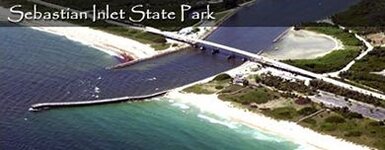A while back I posted something about the current from Jupiter Inlet appearing to be going south as it appeared according to the dark water during low tide.
I was told that this was not correct so I went in another direction BUT after reading what the NOAA is saying YES the beach sand does go south-why I have no idea but certain things I am researching are making a little more sense. Like coral reefs have a higher build up of sand on the North side than on the South side. To be honest I am posting this at the same time I am thinking on several different things at the same time. Like ballast rock would be no different than a reef which means more sand on the North side than on the South side. What I am saying is ANY object laying in the ocean like cannons or wooden structures would be easier to explore on the South side.
This would apply to the Beaches as well. After looking at some beach areas this becomes very apparent. Look at the skinny beach areas and you will see that there are buildup sections on the south end of EVERY THIN strip of beach.
So what I am saying is that if you MD any of the beaches concentrate on the thin sections first because the depth to bedrock will be much thinner but if you really want to find artifacts go to the west of the thinnest sections of beach you can find and check it out.
Yes I know that I saying some weird things but spend a few minutes thinking about this cause I just MAY be right.
Look at the maps.
Peg Leg
I was told that this was not correct so I went in another direction BUT after reading what the NOAA is saying YES the beach sand does go south-why I have no idea but certain things I am researching are making a little more sense. Like coral reefs have a higher build up of sand on the North side than on the South side. To be honest I am posting this at the same time I am thinking on several different things at the same time. Like ballast rock would be no different than a reef which means more sand on the North side than on the South side. What I am saying is ANY object laying in the ocean like cannons or wooden structures would be easier to explore on the South side.
This would apply to the Beaches as well. After looking at some beach areas this becomes very apparent. Look at the skinny beach areas and you will see that there are buildup sections on the south end of EVERY THIN strip of beach.
So what I am saying is that if you MD any of the beaches concentrate on the thin sections first because the depth to bedrock will be much thinner but if you really want to find artifacts go to the west of the thinnest sections of beach you can find and check it out.
Yes I know that I saying some weird things but spend a few minutes thinking about this cause I just MAY be right.
Look at the maps.
Peg Leg





